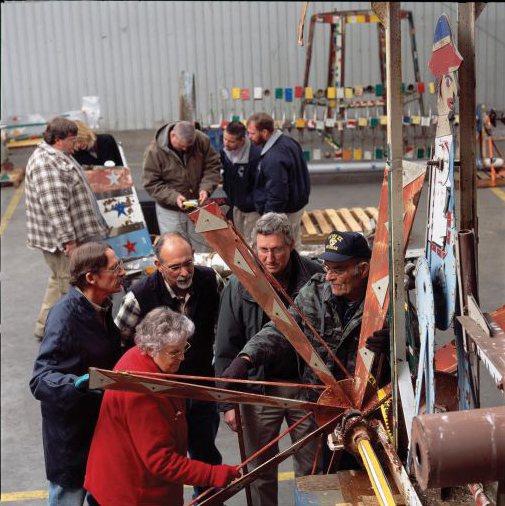NEA Research Report Highlights Economic Impact of the Arts in Rural Communities
By Victoria Hutter, Press/Public Affairs, NEA –
 Rural arts organizations draw more non-local audiences to their venues and report greater civic leadership and customer connectedness than their urban peers, according to a new research report, Rural Arts, Design, and Innovation in America: Research Findings from the Rural Establishment Innovation Survey. Published by the National Endowment for the Arts (NEA), the reportis based primarily on 2014 data from the U.S. Department of Agriculture’s Economic Research Service (ERS). The ERS’s Rural Establishment Innovation Survey examines the type and breadth of innovation within rural businesses.
Rural arts organizations draw more non-local audiences to their venues and report greater civic leadership and customer connectedness than their urban peers, according to a new research report, Rural Arts, Design, and Innovation in America: Research Findings from the Rural Establishment Innovation Survey. Published by the National Endowment for the Arts (NEA), the reportis based primarily on 2014 data from the U.S. Department of Agriculture’s Economic Research Service (ERS). The ERS’s Rural Establishment Innovation Survey examines the type and breadth of innovation within rural businesses.
Rural Arts, Design, and Innovation in America is important because until now, arts and economic impact theories have been built and tested only in urban environments. As noted in the report’s preface, “Frequently, the data infrastructure for rural arts research projects has proved inadequate for elementary fact-finding, not to mention for generalizing about rural creative economies as a whole. Into this climate, the Rural Establishment Innovation Survey bursts as an unprecedented resource.”
NEA Director of Research & Analysis Sunil Iyengar said, “We’ve long understood that the arts and design can beautify a place and attract new residents and businesses. This report is unique in showing these attributes as closely linked to innovative business practices in rural communities nationwide.”
Among the report’s conclusions are:
Rural and urban communities
- Two-thirds of all businesses (rural and urban) consider having local arts and entertainment organizations important for attracting workers.
- Rural and urban arts organizations are equally likely to rate as “substantive innovators,” a designation by the Rural Establishment Innovation Survey that recognizes businesses that encourage new practices and products.
- Arts businesses are unique within the service industry (that includes finance and insurance) for demonstrating innovation in both urban and rural settings through practices such as using surplus funds for innovative projects
Rural performing arts organizations
- Attract more outside visitors to their programs than do urban arts organizations (31 percent vs. 19.3 percent for urban organizations). Those visitors spend money on admissions, parking, dining, etc. adding to the local economy.
- Play a greater role in their community as civic leaders and in soliciting customer feedback than do their urban peers (36 percent vs. 24 percent for urban organizations), highlighting engagement in their community’s life and its future.
- Have a strong association with innovative or design-integrated businesses. Where there are arts organizations, there tend to be businesses that have innovative products or practices.
- Innovative or design-integrated businesses report expanding their products and services and access new markets such as using design services, registering a trademark, or investing in product branding.
Rural counties that host performing arts orgs
- Tend to have greater population growth and residents that are better educated and earn higher incomes than residents of other rural counties.
- Between 2010 and 2014, when the average population growth in rural counties was 391 people, those counties that hosted performing arts organizations saw an increase of 2,096 people.
Another NEA research investment in rural communities is through one of the agency’s research labs at the Rural Policy Research Institute of the University of Iowa. Partnering with Art of the Rural, the university will use FY 2017 award of $150,000 to study the intersection of the arts, entrepreneurship, and innovation in rural contexts.
Rural Arts, Design, & Innovation in America also has findings on manufacturing, design and innovationthat complement an earlier NEA report.
More information about the NEA’s investment in small and rural communities is in this fact sheet.
Join the online conversation at #NEArural

